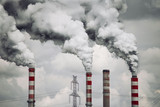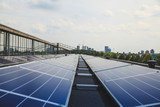Carbon Offsets for Businesses: Where They Go, What They Do, and Why They Matter
Carbon offsets are a way that companies can make up for the environmental harm and carbon dioxide (CO2) emissions that their material sourcing, manufacturing, and processing systems have caused. But what does that really mean, and how does it benefit the environment?
CO2 emissions can be offset in a number of ways, including through personal environmental volunteer work, but it typically entails donating money to an organization that completes conservation efforts on your behalf. Many of these efforts involve reforesting projects that plant enough trees to absorb all of the carbon that you were responsible for producing, or projects that increase energy efficiency and therefore reduce the amount of carbon in the atmosphere before it is even emitted. For example Carbonfund.org, one of the organizations J. H. Appleseed personally uses to offset their carbon emissions, splits up their efforts into three areas: energy efficiency, forestry, and renewable energy. Some of their projects include providing low-income or less-developed communities with more efficient energy sources, restoring various tropical rainforests, and establishing multiple renewable energy plants. More information on the specific projects that Carbonfund.org takes on and their impacts can be found here, and there are many other great organizations that do similar work that are worth investigating.
This is all very important because any form of business will undoubtably cause some form of environmental harm at all points throughout their production process and supply chain, from mining or otherwise harvesting the materials for both product and equipment to assemble and transport it to water waste and pollution during manufacturing, fuel use and its consequences during shipping, or even just general electricity use throughout the entire process. Companies have a responsibility to see and acknowledge the mark they are leaving on this planet and do all they can to ensure that it is a good one.
Some offsetting projects also revolve around carbon sequestration in the terms of carbon capture, which often uses various forms of technology to physically remove carbon dioxide from the atmosphere or directly from where they are being emitted and storing it in some way, often underground, so that it does not continue to pollute the environment. However, we do not see this as tackling the root of the problem, rather providing a way for large companies to continue their polluting ways and sweep the mess they create under the rug. If carbon capture technology fails or the storage containers leak, they can still release all of the pollutants that they have removed and make the climate crisis even worse. Instead, we try to steer away from investing in carbon capture technology and invest our money in brands who truly do things differently and reduce waste and other negative environmental impacts throughout the production and use of their products.
No business can call themselves sustainable or green unless they take all of these negative environmental costs into account and do their part in making up for them, and it shouldn't all fall down to the customer either. However, while the customer may only be directly responsible for the comparably small percentage of carbon emissions from the seller to their home, consumer choice gives them the power to choose what brands to support and determine how their money and product demand affects the environment. After all, if you buy it, they will come.
Recent Posts
-
Air Quality Conundrum in Delhi and the Challenges of Environmental Science
The headline of a story published on CBS news on November 14th of this year read that residents of t …Dec 3rd 2024 -
The Importance of Environmental Engineering
In 1854, John Snow (no, not the Game of Thrones character), a physician investigating cholera outbre …Nov 26th 2024 -
A Sustainable and Ethical Thanksgiving
The story of the first Thanksgiving is commonly portrayed as a time when friendly Indians greeted th …Nov 25th 2024




